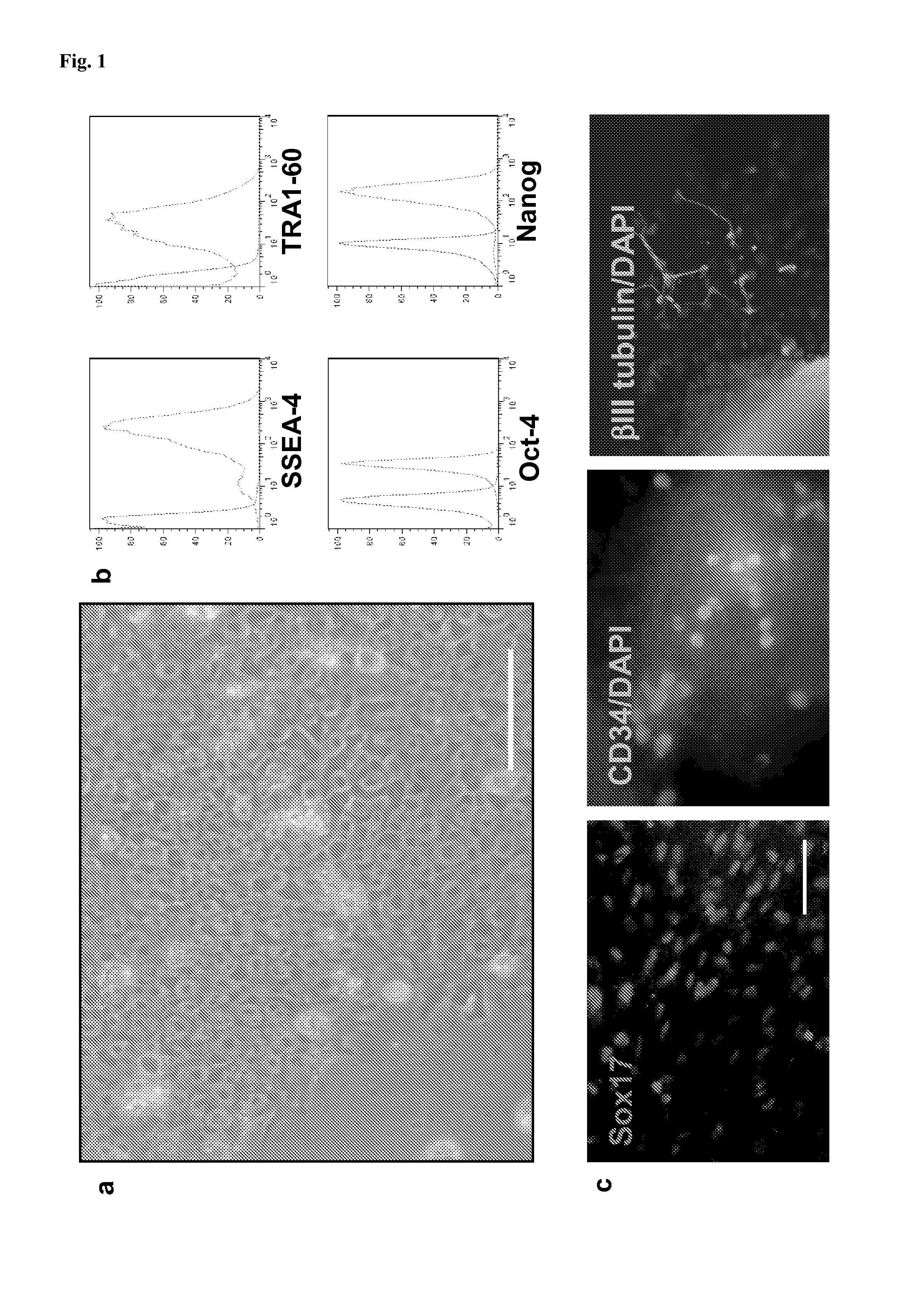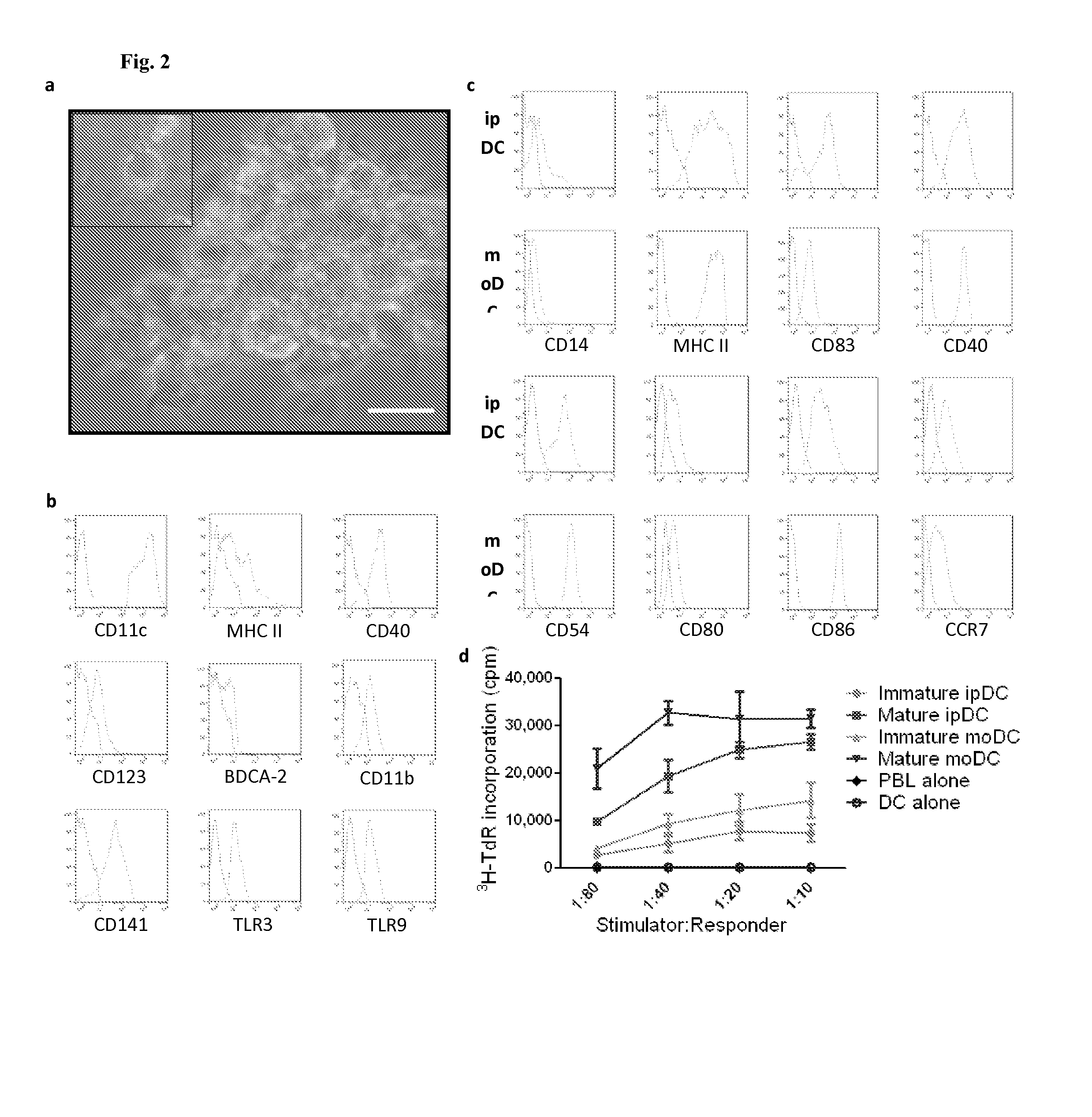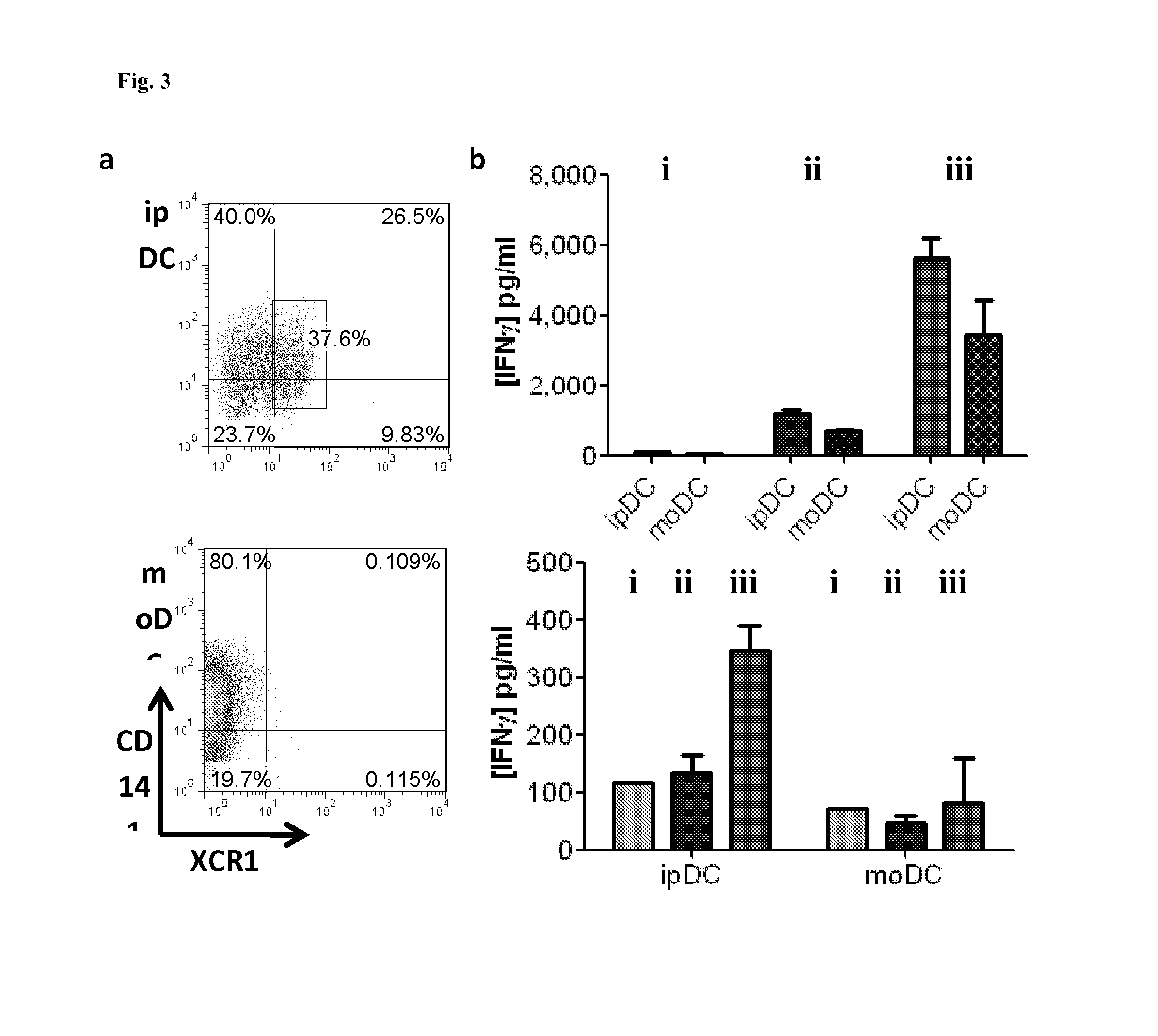Dendritic cells obtained from induced pluripotent stem cells (IPSCS)
a technology of ipscs and dendrites, applied in the field of dendrites (dcs), can solve the problems of limiting the scope of such an approach to hla haplotypes, low yield, and inability to achieve a feasible treatment for cancer
- Summary
- Abstract
- Description
- Claims
- Application Information
AI Technical Summary
Benefits of technology
Problems solved by technology
Method used
Image
Examples
example
Materials And Methods
Derivation And Culture of Human Induced Pluripotent Stem Cells
[0128]Human iPSC were derived, maintained and their pluripotency assessed. Cells were cultured in 6 well plates in a volume of 4 ml per well and the medium replaced daily, except on the day following their passage. Plates were coated with matrigel (BD Biosciences) diluted 1:30 and stored at 4° C. until use. hiPSC cultured in mTeSR1 (StemCell Technologies) were routinely passaged every 6-7 days at a 1:12 dilution, while hiPSC maintained in TeSR2 (StemCell Technologies) were passaged every 5-6 days at a dilution of 1:12-1:15.
Directed Differentiation of DC
[0129]Briefly, the differentiation medium consisted of XVIVO-15 (Lonza) supplemented with non-essential amino acids, 2 mM L-glutamine, 1 mM sodium pyruvate (PAA Laboratories GmbH), 5×10−5 M 2-mercaptoethanol (Sigma), granulocyte macrophage-colony stimulating factor (GM-CSF; 50 ng / ml) (Peprotech), stem cell factor (SCF; 20 ng / ml) (R&D Systems), vascular ...
PUM
 Login to View More
Login to View More Abstract
Description
Claims
Application Information
 Login to View More
Login to View More - R&D
- Intellectual Property
- Life Sciences
- Materials
- Tech Scout
- Unparalleled Data Quality
- Higher Quality Content
- 60% Fewer Hallucinations
Browse by: Latest US Patents, China's latest patents, Technical Efficacy Thesaurus, Application Domain, Technology Topic, Popular Technical Reports.
© 2025 PatSnap. All rights reserved.Legal|Privacy policy|Modern Slavery Act Transparency Statement|Sitemap|About US| Contact US: help@patsnap.com



